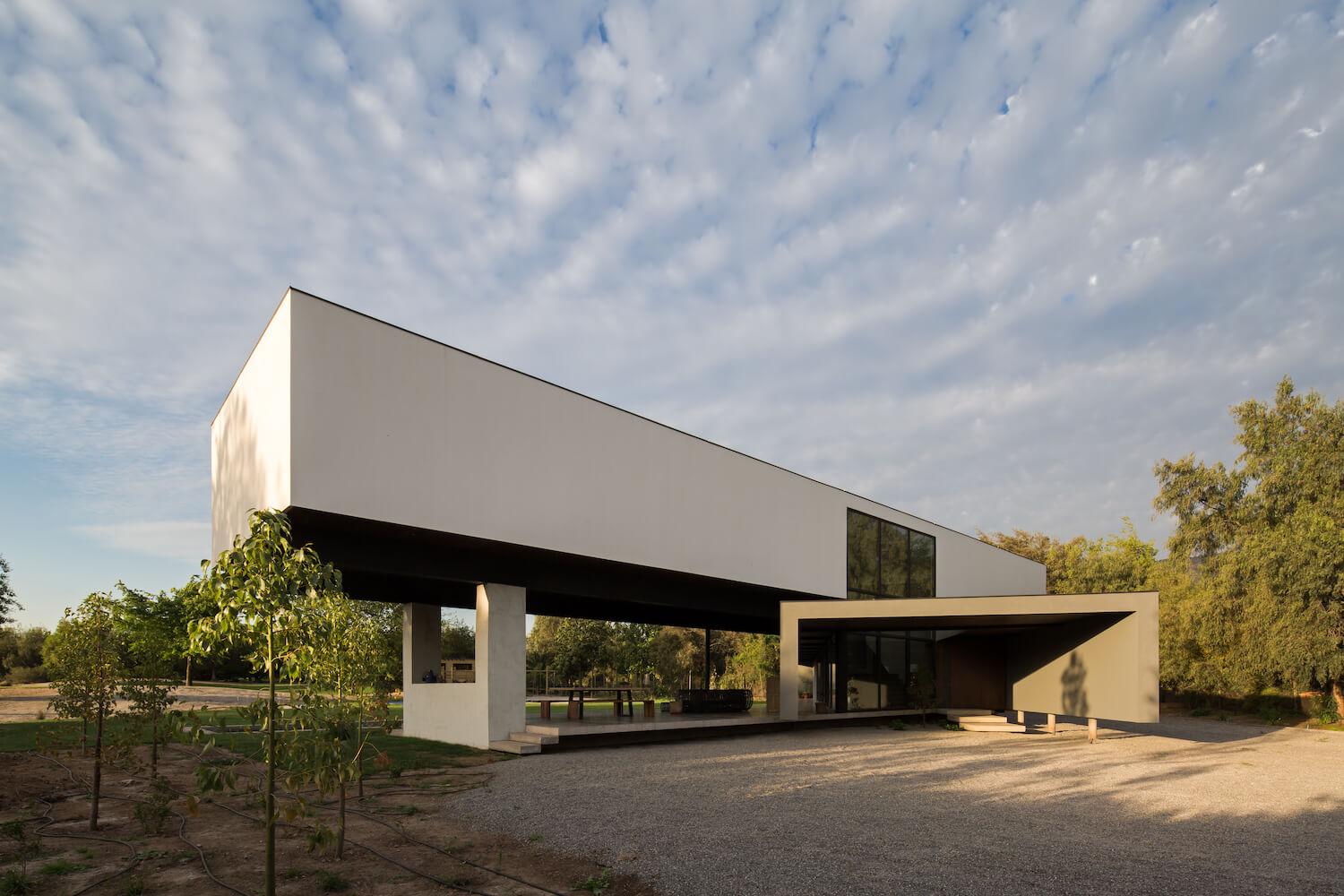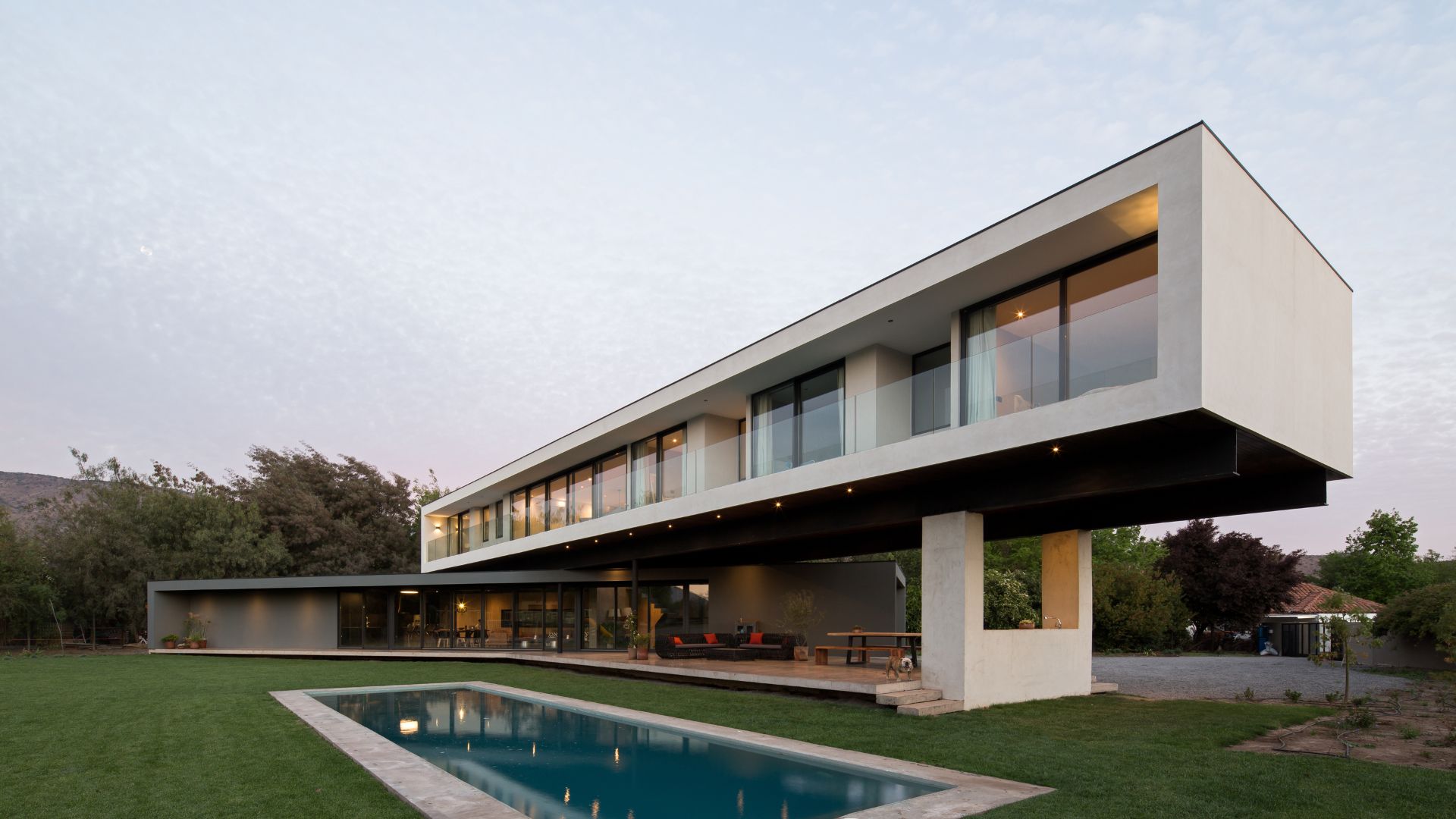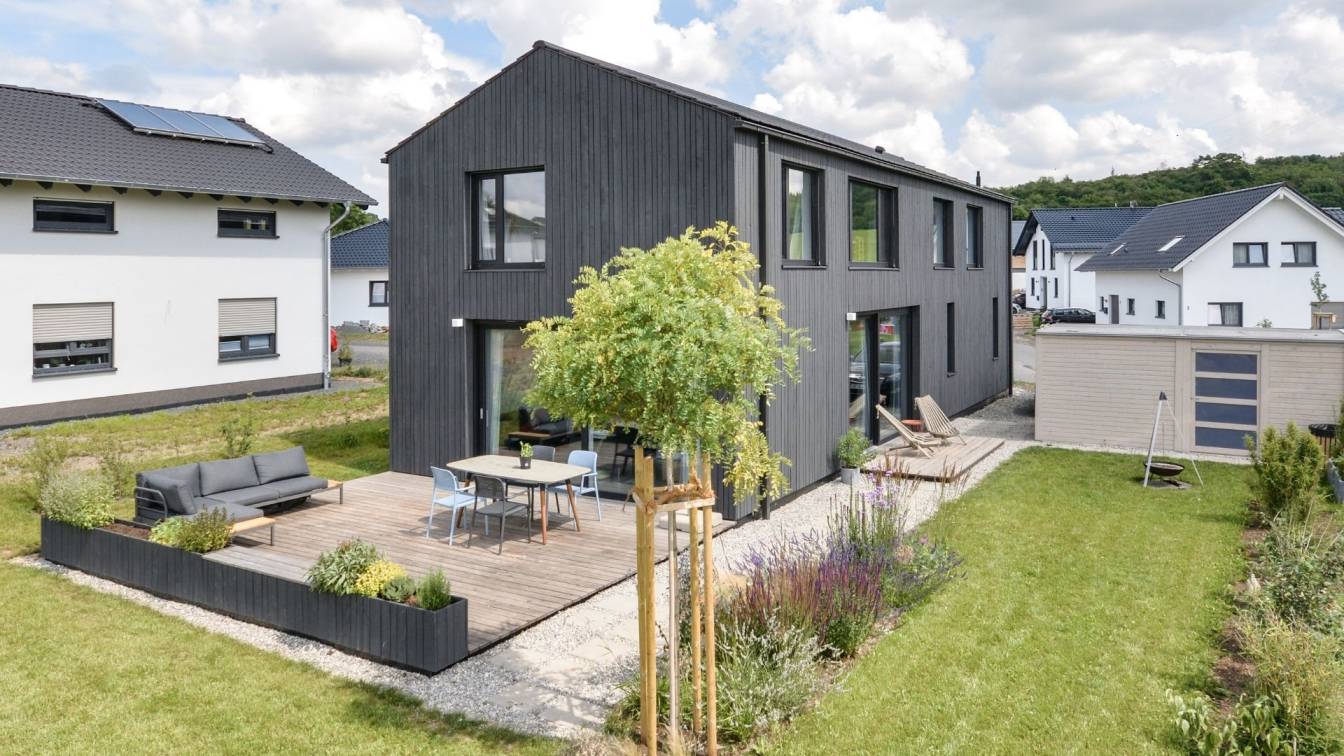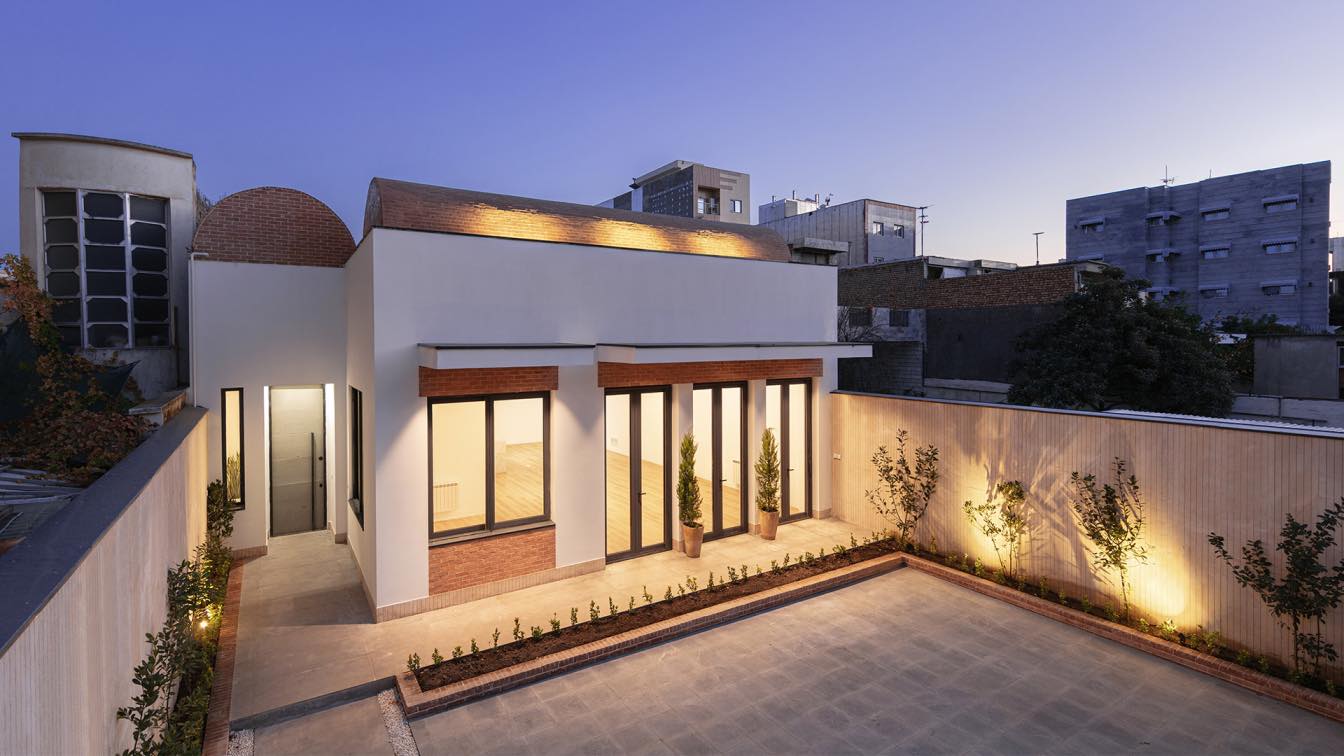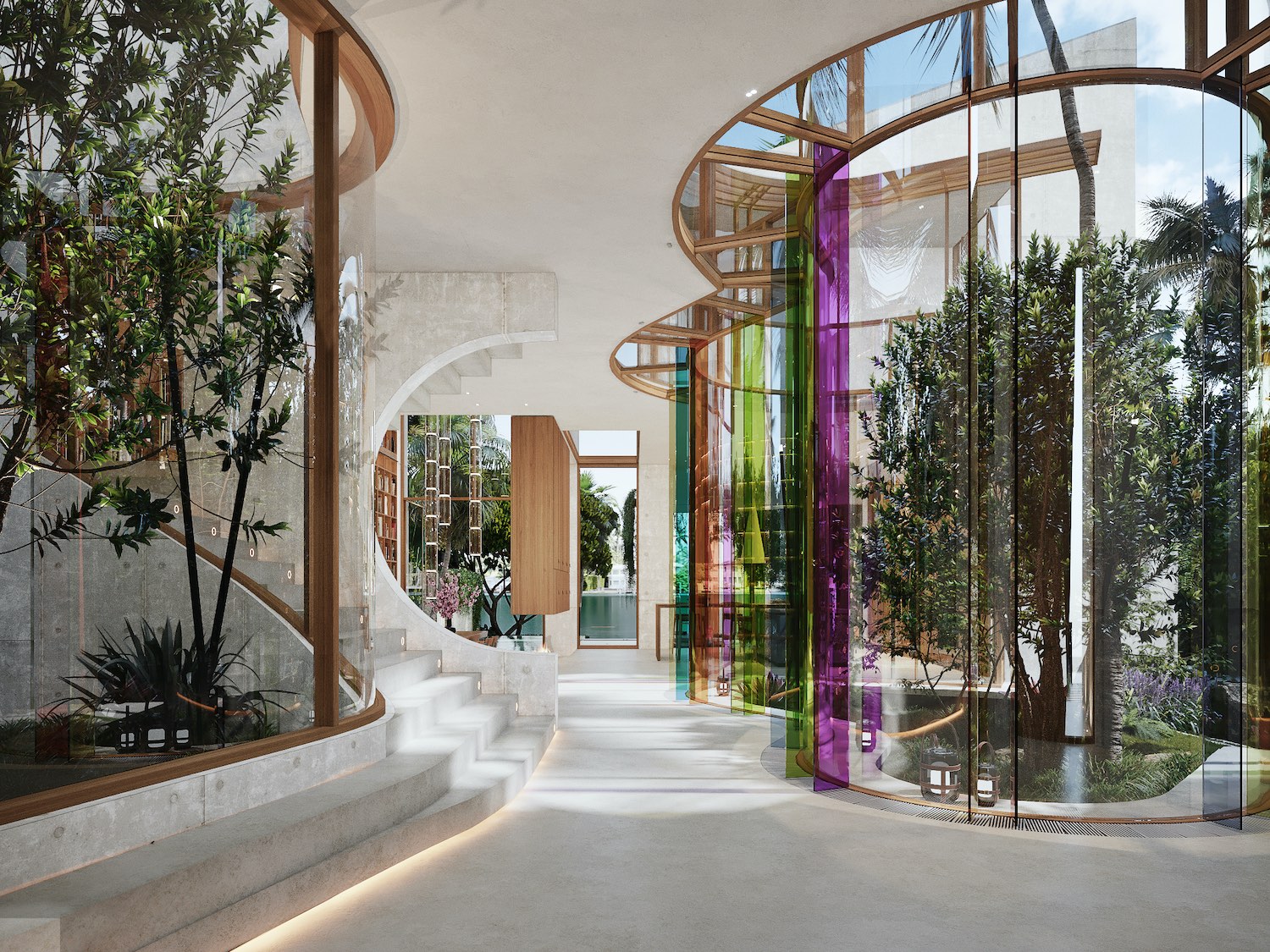WYND: The design is based on a bar-type house, where the public and private areas are programmatically differentiated on its 2 different levels. They take advantage of the views towards the green areas of the golf course, and the good orientation of the main enclosures. In addition, an exterior circulation corridor is established with different terraces and a barbecue area.
What was the brief?
Carry out a volumetric location and project that takes advantage of the views of the golf course and integrates this green area as if it were an endless garden. In addition to being able to generate fluid common areas on the first floor, leaving private areas with views of the mountains on the second floor.
What were the solutions?
The land was so wide that to approach it we thought of the two floors as if they were each a project. The first floor is located with the best views of the course and according to the shape of the land to divide a public access area and a garden integrated into the more private golf course. The second floor is located on the ground in the position that has the best views to the east and the mountains. The problem was being able to unite these two bodies, through its staircase, with a good architectural solution that articulates the entrance hall and functionally distributes the house. The result was an area under the upper volume that increased the location of the first floor towards the garden and surprisingly contributed with a tremendous terrace under the volume which ends up being the most used space in the house.
What building methods were used?
The construction, due to the type of soil, was defined on a concrete base, with a steel structure construction on two levels, taking advantage of leaving the metal as an architectural expression in the terrace area, with a large beam that allows freeing of pillars this space. The lining is made of a thermal insulating material called EIFS, which is an outer layer of 5 cm of EPS, covered with a series of layers that give a lost-grain paint finish. We wanted to differentiate the two volumes with different colors to enhance their movement.
